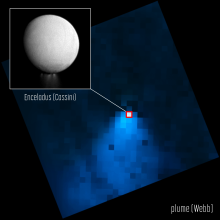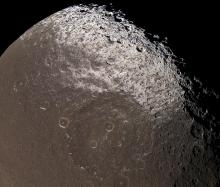Listen to today's episode of StarDate on the web the same day it airs in high-quality streaming audio without any extra ads or announcements. Choose a $8 one-month pass, or listen every day for a year for just $30.
You are here
Big Year
The skywatching year gets off to a great start this evening, with a line-up of the Moon and two planets.
As twilight begins to wane, look for the crescent Moon low in the southwest, with earthshine lighting up the dark portion of the lunar disk. The planet Venus shines as the “evening star” to the upper left of the Moon. And farther to the upper left, you’ll come to the planet Mars, which looks like a fairly bright orange star.
We have many such encounters to look forward to this year, as the Moon teams up with many bright planets and stars.
The biggest of these encounters is the most spectacular of all astronomical events: a total solar eclipse. It’ll knife across the United States on August 21st, slicing through Oregon and across the Midwest before departing the country at South Carolina.
Along that path, day will turn to night for a couple of minutes, and the Sun’s hot outer atmosphere — the silvery corona — will glisten around the intervening Moon. The eclipse will pass near several big cities, including Portland, Oregon; Kansas City, St. Louis, and Nashville.
And encounters will continue beyond Earth as well, as spacecraft study the worlds of the solar system from up close. One of those craft will stage its final encounter in September. Cassini will plunge into Saturn’s atmosphere — ending a decade of encounters with the planet, its rings, and its amazing moons.
We’ll have more about the Moon and its beautiful companions tomorrow.
Script by Damond Benningfield
- ‹ Previous
- Next ›






